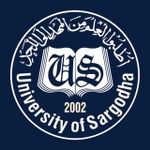Physiology is the integrative study of cellular and whole-body function and is the pivotal discipline linking other basic biomedical sciences on the one hand with the experimental and clinical medicine on the other. Physiology is the science that seeks to explain the physical and chemical mechanisms that are responsible for the origin, development, and progression of life.Two approaches are used to explain events that occur in the human body; one emphasizes the purpose of a body process and the other emphasizes the underlying mechanism by which this process occurs. In response to the question “Why do I shiver when I am cold?” one answer would be “to help my body warm up, because shivering generates heat.” This approach, which explains body functions in terms of meeting a bodily need, emphasizes why body processes occur. Physiologists, however, explain how processes occur in the body. They view the body as a machine whose mechanisms of action can be explained in terms of cause and- effect sequences of physical and chemical processes—the same types of processes that occur throughout the universe. A physiologist’s explanation of shivering is that when temperaturesensitive nerve cells detect a fall in body temperature, they signal the area in the brain responsible for temperature regulation. In response, this brain area activates nerve pathways that ultimately bring about involuntary, oscillating muscle contractions (that is shivering). Emphasis in the course will be on normal structure and function of the human body and the approach will be to develop an understanding of the integrative nature of physiological systems along with clinical and research orientation.
Here we will discuss homeostasis, a dynamic steady state of the constituents in the internal fluid environment (the extracellular fluid) that surrounds and exchanges materials with the cells. Maintenance of homeostasis is essential for survival and normal functioning of cells. Each cell, through its specialized activities, contributes as part of a body system to the maintenance of homeostasis.
Cells are the highly organized, living building blocks of the body. A cell has three major parts: the plasma membrane, which encloses the cell; the nucleus, which houses the cell’s genetic material; and the cytoplasm. The cytoplasm consists of the cytosol, organelles, and cytoskeleton. The cytosol is a gel-like liquid within which the organelles and cytoskeleton are suspended. Organelles are discrete, well-organized structures that carry out specialized functions. The cytoskeleton is protein scaffolding that extends throughout the cell and serves as the cell’s “bone and muscle.” Through the coordinated action of these components, every cell performs certain basic functions essential to its survival and a specialized task that helps maintain homeostasis. Cells are organized according to their specialization into body systems that maintain the stable internal environment essential for the whole body’s survival. All body functions ultimately depend on the activities of the individual cells that make up the body.
At the end of this course students will be able to understand;
- Levels of Organization in the Human body
- Concept of Homeostasis
- Homeostatic Control Systems
- The Cell & its Components and its Functions
- The Cell Membrane and Transport Mechanisms across the membrane
- Genetic Control of Protein Synthesis,Cell Function
- Cell Reproduction
The following Books are recommended for this course;
TEXTBOOK OF MEDICAL PHYSIOLOGY, GUYTON,A.C, 11TH Edition
REVIEW OF MEDICAL PHYSIOLOGY ,GANONG,W.F, 22ND Edition
PHYSIOLOGY BOARD REVIEW SERIES, COSTANZO, LINDA S,6TH Edition
ESSENTIALS OF MEDICAL PHYSIOLOGY, SEMBULINGHAM,K, 7TH Edition
Assessment Criteria:
Assessment schedule: 5 tests & one send-up written examination including objective & subjective (SEQs, LEQs) type questions
Internal Assessment (based on class tests, class performance and attendance): 20 Marks
Written: 80 Marks


